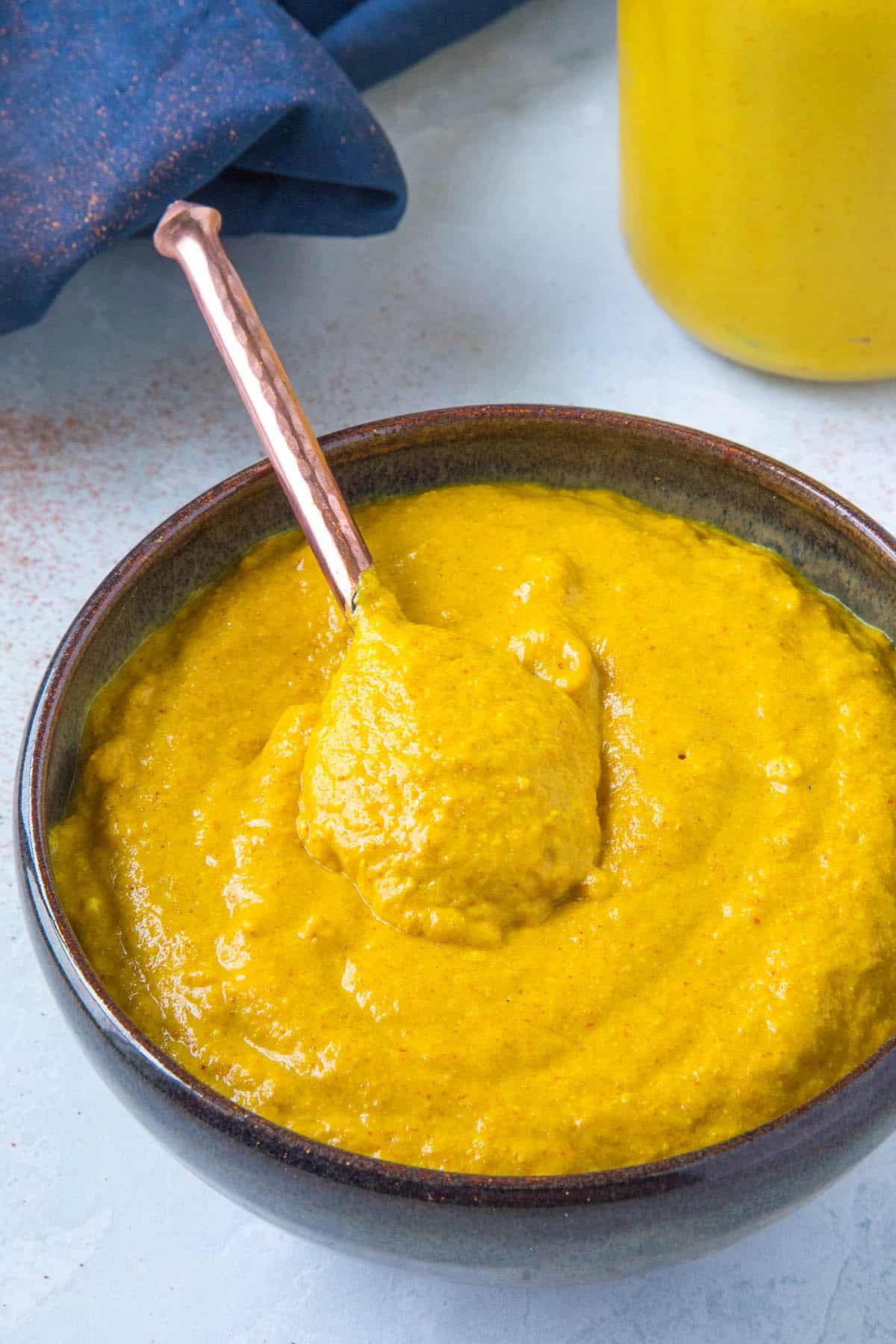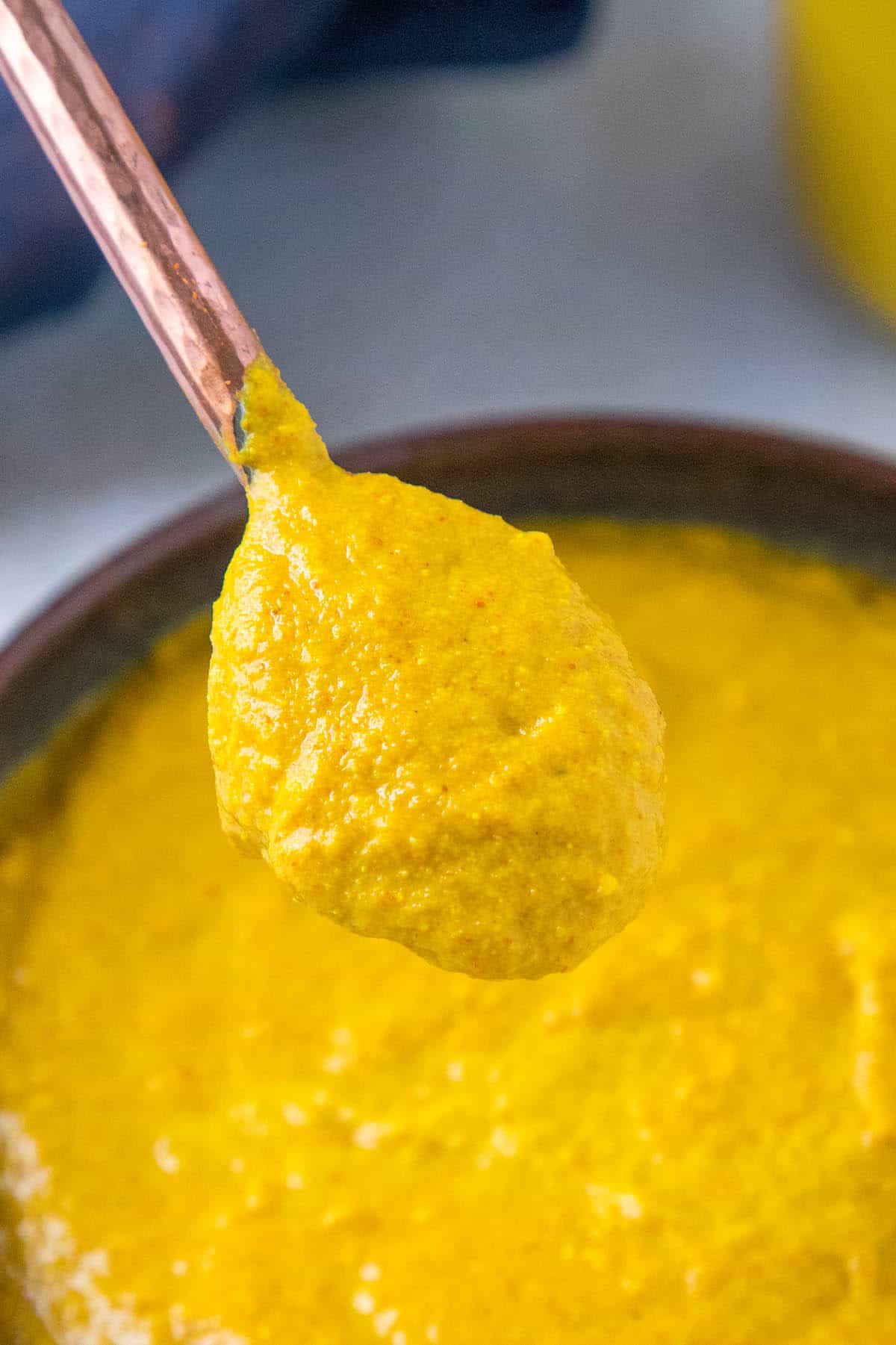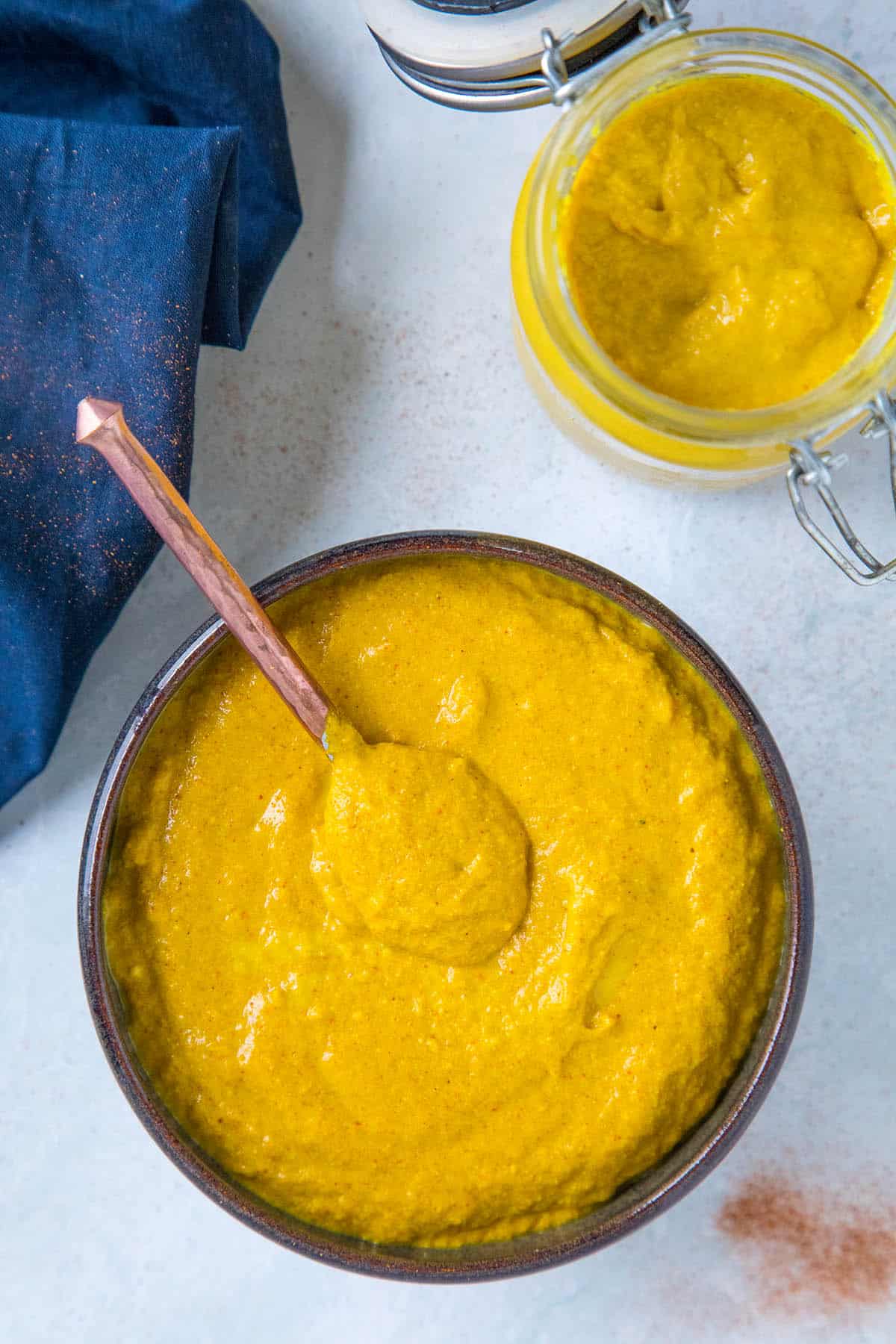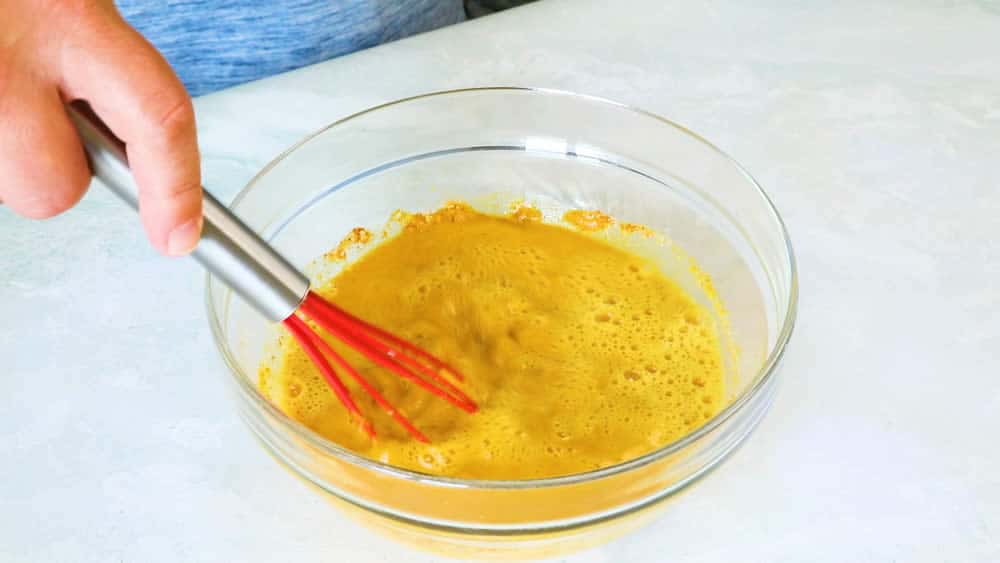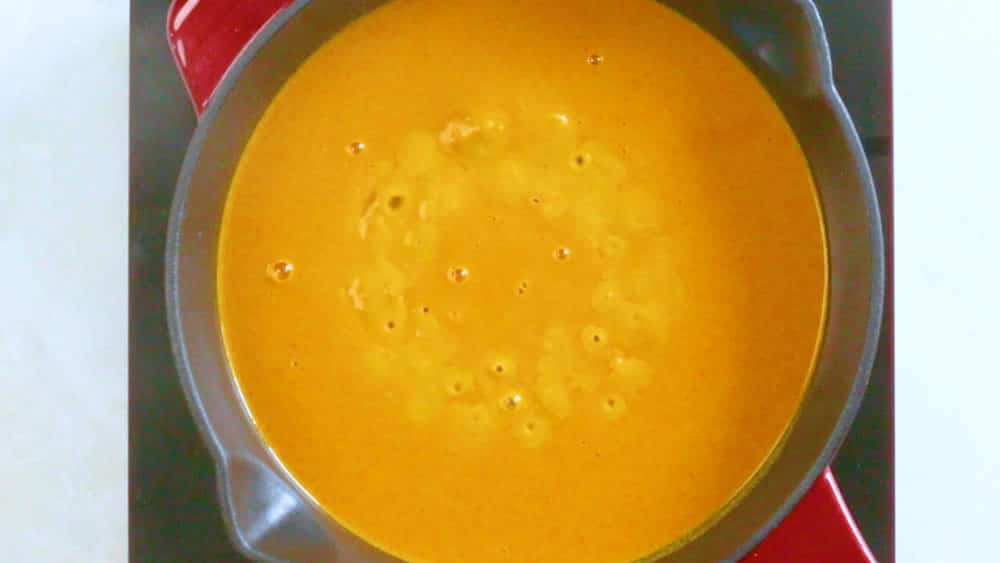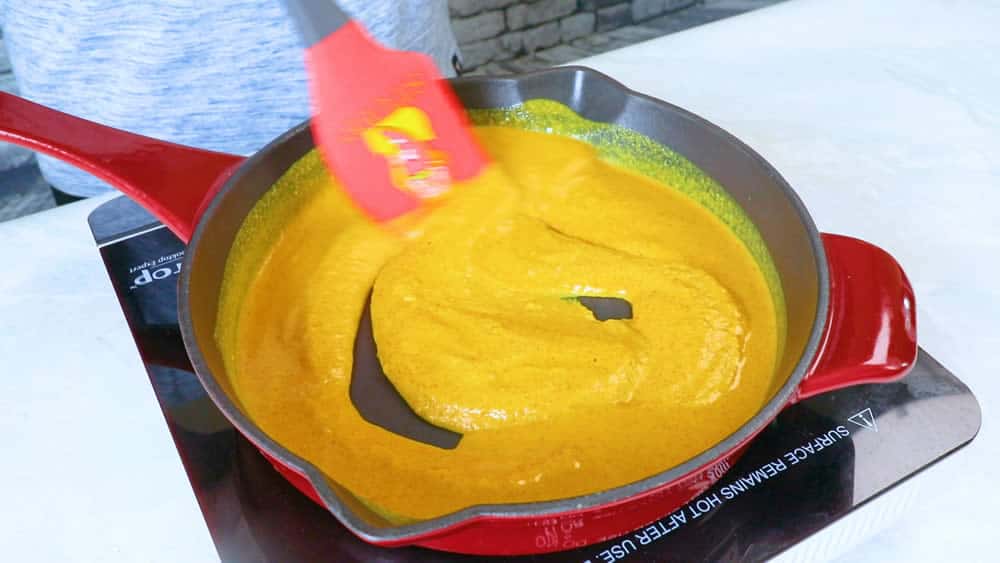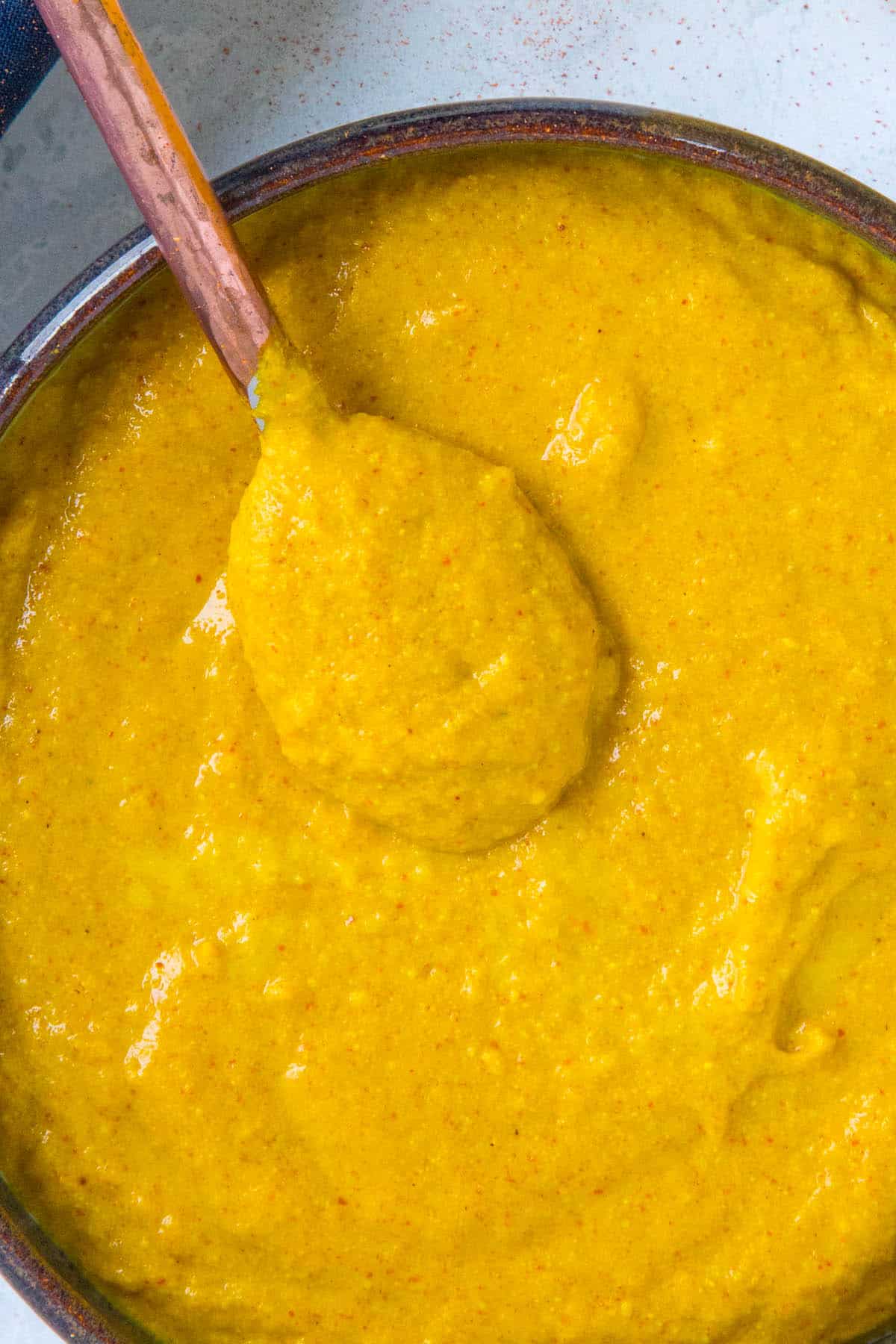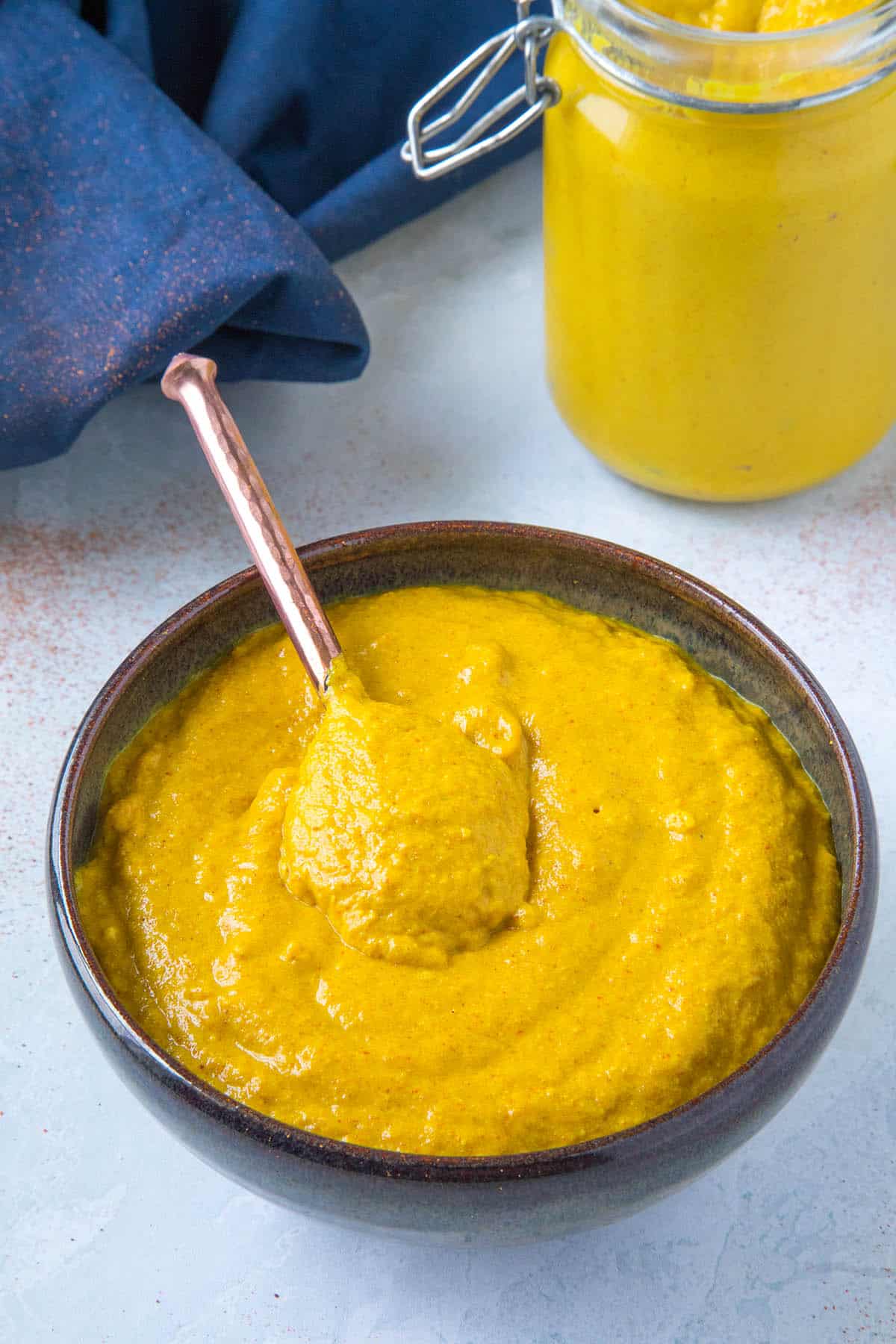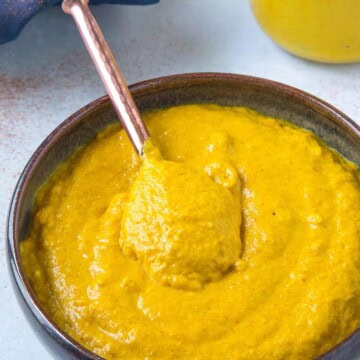Next, pour the mixture into a wide pan or pot and bring to a quick boil. Reduce the heat and simmer on medium-low heat for 10-15 minutes, stirring occasionally, or until you achieve your desired thickness. I couldn’t imagine as a kid not having some simple yellow mustard on hand for squeezing onto my hot dog, my favorite sandwiches, or a burger fresh off the grill. The thing is, you don’t have to limit yourself to store bought condiments, classic yellow mustard included. This homemade version is so much better. You can make it yourself at home with a few simple ingredients. Once you’ve learned how to make yellow mustard, the world opens up to experimentation. You’re free to include additional ingredients and vary up the ratios and flavors. Read more about some possible adjustments in the Recipe Notes section below. Yellow mustard powder is itself made by grinding yellow mustard seeds, which come from the mustard plant, into a powder form. There are three different types of mustard seeds - white or yellow mustard seeds, brown mustard seeds, and black mustard seeds. You can make mustard from whole mustard seeds as well, but that would result in more of a grain mustard, not a smooth mustard. When you mix ground mustard seeds with water, a chemical reaction occurs, forming a mustard oil, which can vary from plant to plant and with different colored seeds. This variability can result in different flavors, intensity and pungency. You can learn more about them and also how to make mustard from my post, How to Make Mustard - the Basics. Let’s talk about how we make it at home, shall we? Once your ingredients are ready, whisk together the mustard powder, water, vinegar and seasonings together in a medium bowl. Make sure there are no lumps. Boom! Quite easy, right? Who knew making homemade yellow mustard would be so simple. It’s such an uber American condiment, widely loved across the United States. Remove from heat and cool. Store in a sealable container in the refrigerator. It will thicken as it cools. Got any questions? Ask away! I’m happy to help. If you enjoy this recipe, I hope you’ll leave a comment with some STARS. Also, please share it on social media. Don’t forget to tag us at #ChiliPepperMadness. I’ll be sure to share! Thanks! — Mike H.
The Spice Factor
I like a bit of kick to my mustards, so I’ve opted to include cayenne pepper here. You can omit altogether for a yellow mustard that is more like what you get in the store, or use paprika or smoked paprika for a touch of heat. If you’d like a much hotter version, try using ghost pepper powder.
Thickening the Mustard
I’ve seen some recipes that call for flour in them, using the flour as a thickener. Flour is not needed. Your mustard will thicken up just fine if you stick to this recipe and the ratios I’ve provided. Thickening time really has to do with the HEAT. Simmer on low and it will take longer to thicken. Kick up the heat a bit and it will thicken more quickly, but it can splatter. Keep this in mind. Also, do not add extra mustard powder after the fact to thicken it up. Just keep heating it and stirring, and it will thicken up accordingly.
Texture
This yellow mustard is noticeably grainier than what you’re used to from the grocery store. This is because the mustard is not overly processed or strained. You can, of course, strain it through a fine mesh sieve to achieve a smoother mustard, but it is not necessary. The grainy texture gives it an interesting character.
About the Vinegar
I’ve used a simple distilled white vinegar for this recipe, but feel free to experiment. Different types of vinegar will give you different results and flavors. Apple cider vinegar, for example, is sweeter and juicier.
About the Liquids
Instead of water, try substituting it for wine or light beer, or a combination of wine and vinegar. There are many options for flavorful liquids, such as fruit juices and more, that will achieve the same results with different flavors. This is why making mustard at home is so fun. I’ve always loved a good beer mustard.
About the Turmeric
Turmeric brings in the vibrant yellow color of a yellow mustard. I’ve used a whole teaspoon because I was looking to achieve an extremely yellow mustard. Feel free to dial that back and use only a half a teaspoon or even less. That’s it, my friends! I hope you enjoy your homemade yellow mustard! Where would we be without yellow mustard? It’s essential for recipes like the famous Chicago-Style Hot Dog, the Cuban Sandwich or Carolina Mustard BBQ Sauce. If you’re interested in learning more about the awesome world of mustard making, check out my post - How to Make Mustard - the Basics.
Yellow Mustard Seeds Brown Mustard Seeds Black Mustard Seeds Mustard Powder
Let me know how your mustard turns out! Send pics! Enjoy!
